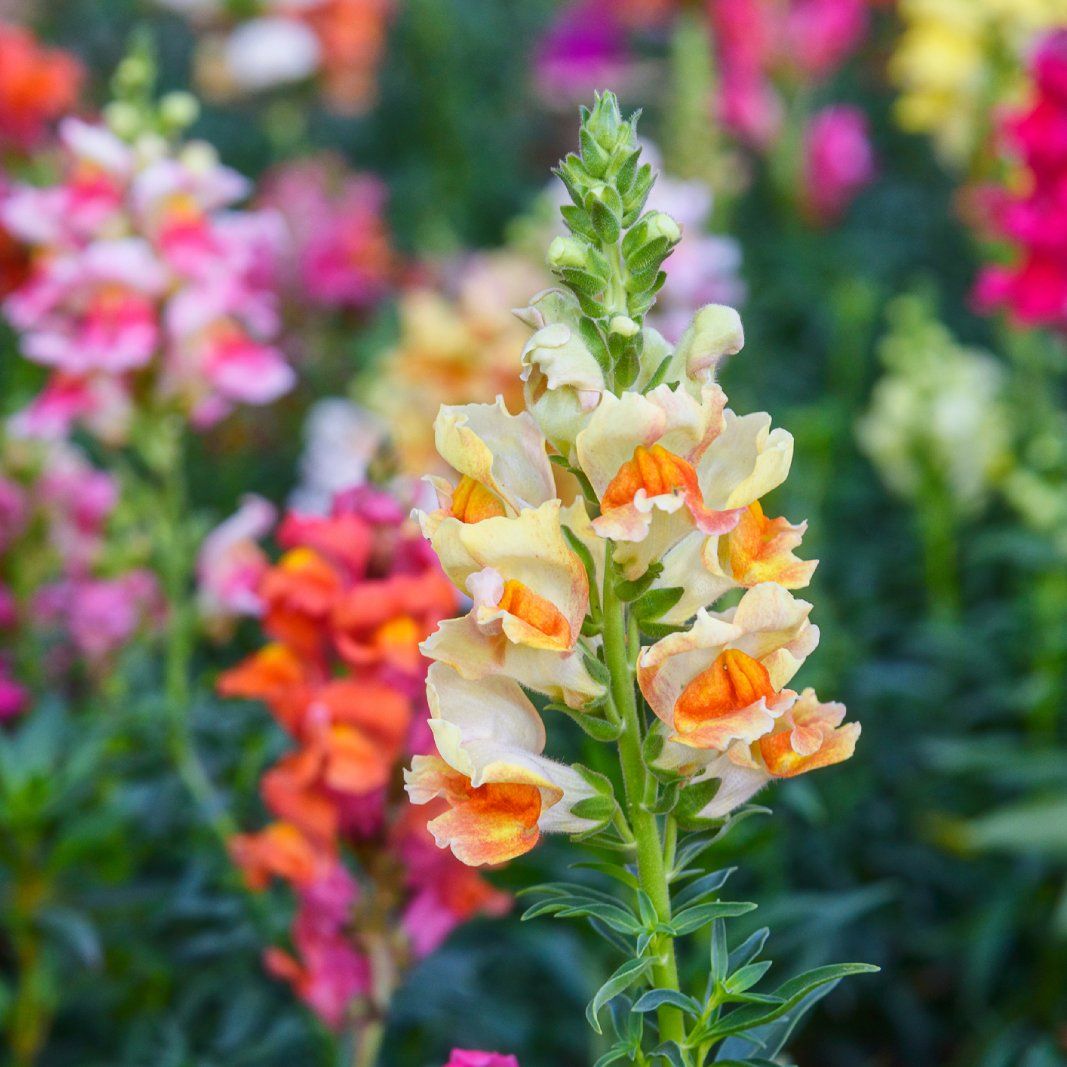Perennial Pairing Selections
Annuals are great, nice and colorful. But perennial planting companions? That’s the ticket for a reliable wave of color and foliage that returns on repeat every year in the garden.
Try these:
Astilbe
Part of the “set it and forget it” crowd of hellebore planting companions, astilbe (Astilbe spp.) is a shade-loving perennial that’s happy to be left on its own, to spread and divide in the garden.
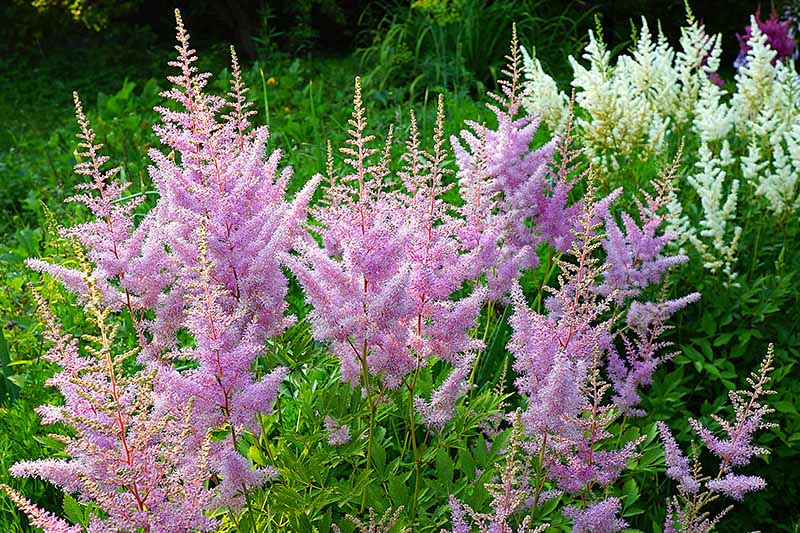
I believe astilbe should be the “filler” plant, with hellebores used as a strong anchor here and there.
Make sure to keep some space between your hellebore and your astilbe, or the astilbe might slowly encroach into the hellebore’s space and take over!
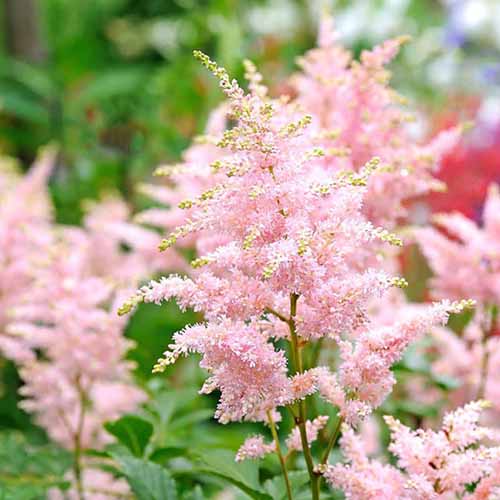
‘Peach Blossom’ Astilbe
My favorite variety of astilbe is known as ‘Bridal Veil,’ but a very close contender is ‘Peach Blossom,’ and bare roots for this one are available in a variety of package sizes from Eden Brothers Nursery.
Doesn’t hurt that it reminds me of one of my favorite songs by the Eels, does it?
Read our astilbe growing guide to learn more.
Creeping Phlox
Low and prostrate with a beautiful emerald green color bridging the gap between hellebore and epimedium, which is next on our list, creeping phlox (Phlox subulata) acts as a lovely carpet for its taller companions when the three are planted together.
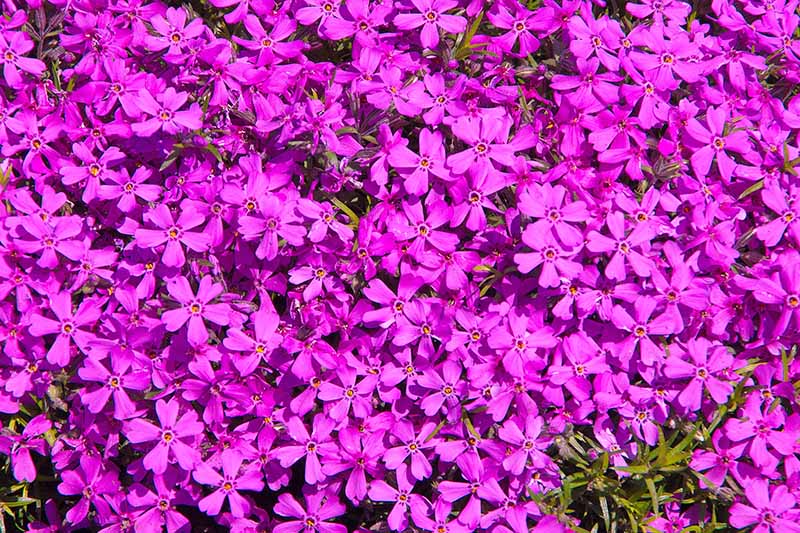
While creeping phlox might not bloom as prolifically in the conditions hellebore favors, it will still grow and offer a perfect match of color and form in a pairing of the two on their own, or with the addition of other recommended companions.
Creeping phlox is available in a variety of colors, but shades like that of this ‘Emerald Blue’ are my go-to selections. Phlox should never steal the show, but instead, be a delightful companion to the rest of the garden.

‘Emerald Blue’ Creeping Phlox
‘Emerald Blue’ plants are available via Amazon in #1 containers.
Find tips for growing your own creeping phlox in our guide.
Epimedium
There’s no way we can talk about hellebore planting companions without mentioning epimedium (Epimedium spp.).
The two plants are made for each other, and they’re truly a perfect match, with the hellebore handling the bulk of the showmanship duties while epimedium fills in the ground surrounding the other, with its distinct serrated leaves and delicate flowers.
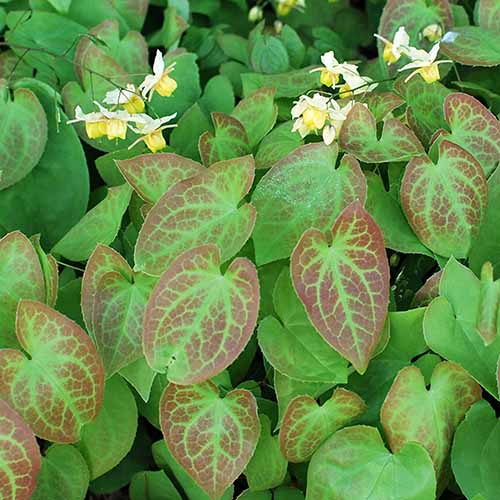
Epimedium ‘Sulphureum’
If you can’t find these low-growing perennials near you, you can pick up some ‘Sulphureum’ epimedium plants in quart-size containers from Amazon.
The flowers on epimedium aren’t especially noteworthy, so aim to find a few plants with foliage like this variety that will be in harmony with your Lenten rose.
Fern
Simply put, you can’t go wrong by adding ferns as a hellebore planting companion. They favor the same environment and are absolutely delightful partners, aesthetically speaking.
I think ferns can be used in two ways:
First, if you’re planting something tall and strong, like ostrich ferns, use them sparingly around your hellebore and let them function as an exclamation mark in an otherwise subdued garden.
If you have a friend or a neighbor growing ostrich ferns, I’m sure you can score some of the extra rhizomes they have growing in their garden.

Ostrich Fern
But if nobody you know is growing an ostrich fern, you can pick them up a few in packs of five bare roots on Amazon.
As a second option, if you’re using a fern that’s softer in color and less in your face, something like Japanese painted ferns, I believe the ferns should be spread around and allowed to fill in the gaps while the hellebores serve as bold accents.

‘Regal Red’ Painted Fern
You can find ‘Regal Red’ painted ferns on Amazon as well, in quart-size pots.
Learn more in our guide to growing ferns.
Heuchera
It’s no secret, I love heucheras, and I’ll find a way to mix them into every possible combination. Fortunately for us, heuchera is one of the best hellebore planting companions you can find!
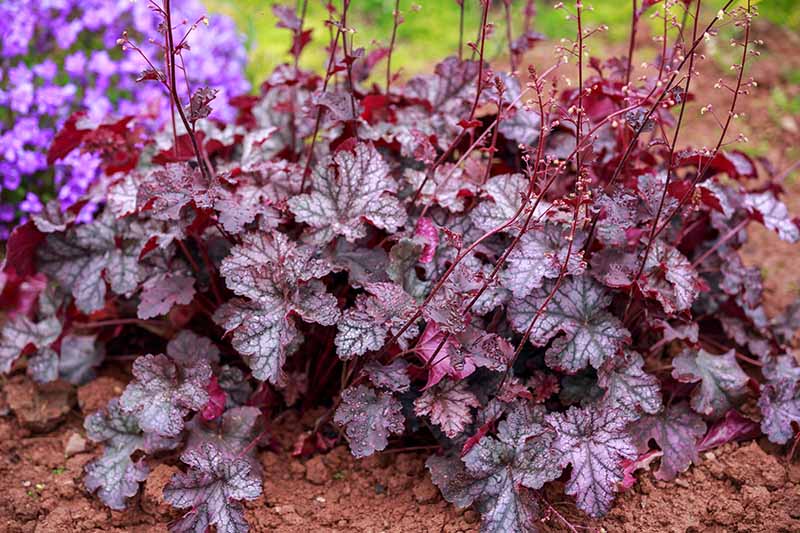
While heuchera (Heuchera spp.) is extremely drought tolerant, these plants also excel in a more fertile environment with hellebores.
I’d suggest using either a lot of heucheras with a few hellebores as an embellishment, or conversely, planting a sea of hellebores with a few heucheras mixed into the bunch.
In my opinion, the best heucheras you can buy are the ones you’ve gotten your own eyes on in person. Of the many plants I’ve bought both in person and online, heuchera gives me the most trouble when it comes to matching their color in real life compared to the pictures I see on the internet.
It’s like going on a date with somebody you met on a dating website and finding yourself having to say, “You really don’t look like your picture…” Does the date usually go well after that?
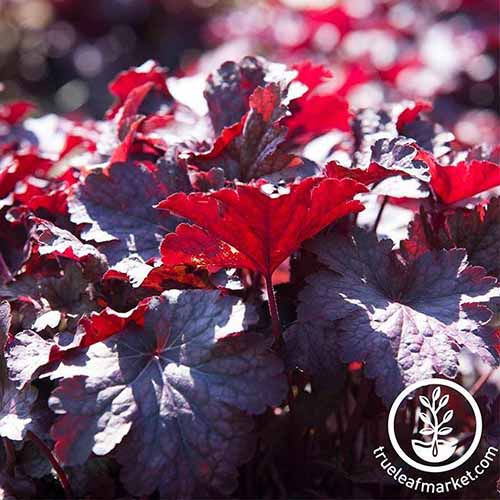
Heuchera ‘Melting Fire’
Luckily, one of my favorites is also available from seed. ‘Melting Fire’ is a bit more bold than the coloration of Lenten rose, but they still work well together.
Find seeds from Mountain Valley Seed Co., available from True Leaf Market in packs of 500.
Check out our guide to growing heuchera to learn more.
Yucca
A total experiment of mine but one that worked out very well, I planted a yellow and green yucca near some hellebores in my backyard as a temporary pairing, but over the season I decided I loved how the two looked together.
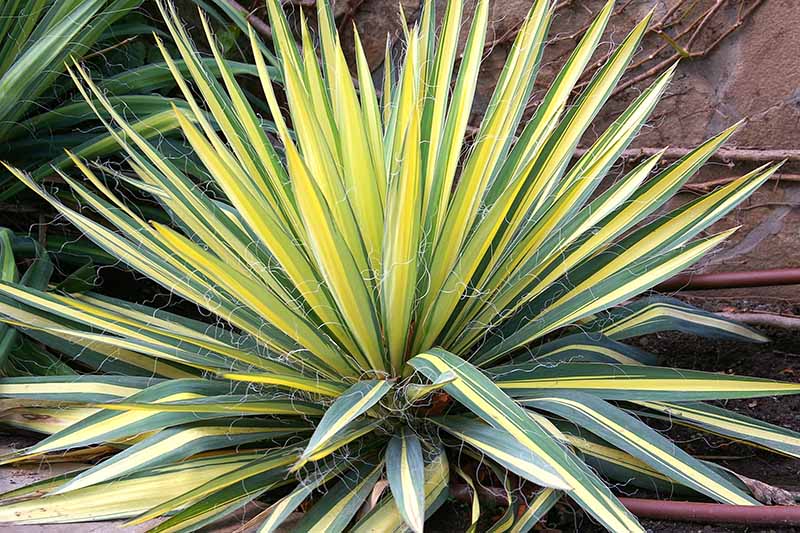
Yucca (Yucca spp.) is a bold and architectural plant with an upright habit.
Its colors and form are all the more vibrant when compared to the more subdued hues and easy-going habit of the hellebore. I planted my yucca a little close to mine, but they have been getting along quite well over the last two years.
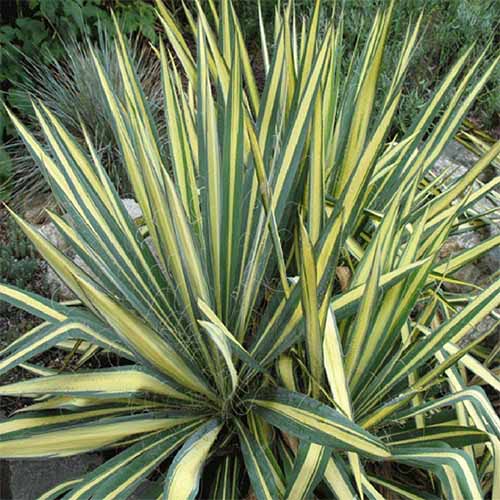
Yucca ‘Color Guard’
‘Color Guard’ is my favorite type of yucca, and you can pick up plants in 2.25-gallon containers on Amazon, in case finding them locally is a hassle.
Trees and Shrubs to Choose From
Hellebores can generally stand being planted under most trees. After all, they like that canopy of shade. Exceptions abound, though!
Hellebores won’t grow in a very dry location, so don’t expect them to do well in that setting regardless of the type of tree they’re growing beneath.
Also note that as long as the soil is rich and full of nutrients, the pH isn’t a concern unless it’s on the extremely low or high side.
Azalea and Rhododendron
If you’re looking for an evergreen display that really comes alive in the springtime and early summer when in bloom, plant some Lenten roses beneath and around your rhododendron and azalea shrubs (Rhododendron spp.).
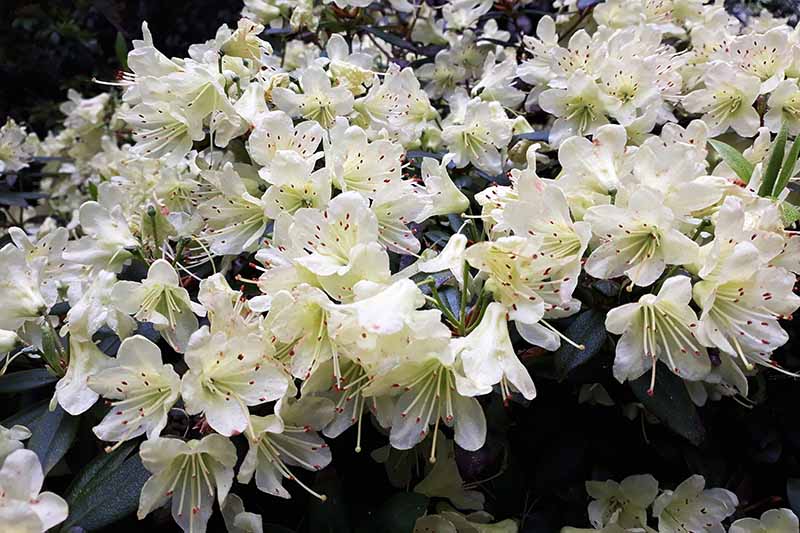
This is another pairing that really does quite well together in every way.
They share many tolerances regarding soil quality, moisture requirements, and light conditions. You simply can’t go wrong planting them as companions.
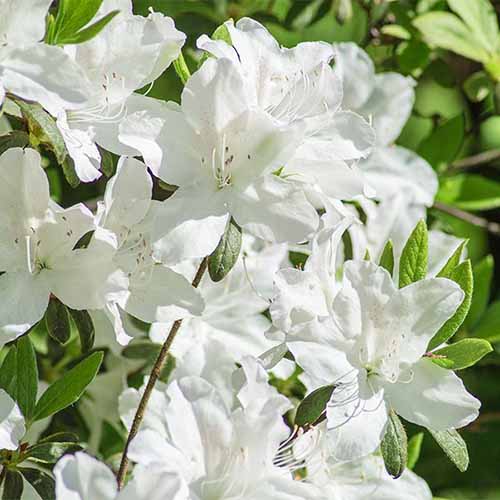
Azalea ‘Cascade White’
White azaleas are my go-to whenever I get a choice, so I often suggest something like ‘Cascade White’ to pair with your Lenten rose. Plants are available from Nature Hills Nursery in #1 containers.
If you don’t already have azaleas growing in your garden, you can read more about adding them to the landscape here. And don’t worry – rhododendrons have almost identical requirements.
Dogwood
A healthy dogwood (Cornus spp.) is a perfect woody selection for a hellebore planting companion.
They enjoy the same growing conditions, but more importantly for the Lenten rose, the dogwood’s leaf cover offers ideal light conditions.
Nothing beats dappled sunlight for the Lenten rose, and most dogwoods offer that kind of protection.
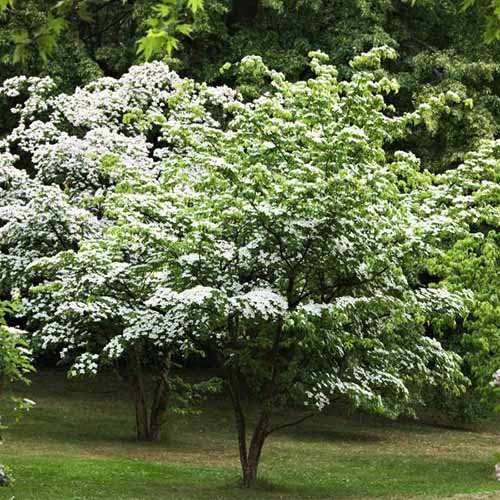
Kousa Dogwood
An oldie-but-goodie here is the kousa dogwood. Find trees now from Nature Hills Nursery, available in several different sizes.
If you’re looking for something a little more compact and with a different habit that’s more shrublike, you can try a few yellow twig dogwoods instead.
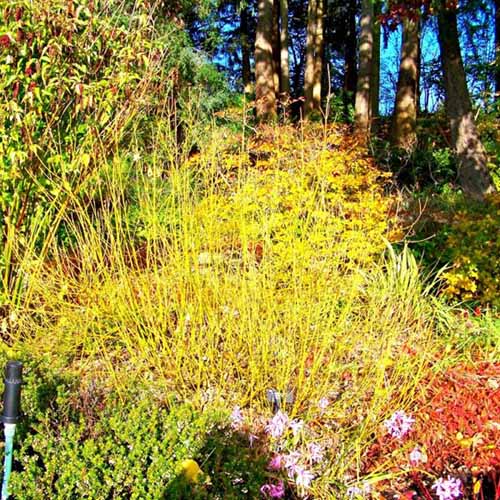
Yellow Twig Dogwood
These are available from Nature Hills Nursery as well, in #1 containers.
Mahonia
Gardeners either love or hate mahonia (Mahonia spp.). This prickly shrub grows on a stark trunk with a crown of sharply pointed leaves at the top.
But you’ll find lovely flowers and berries on mahonia as well, and this is an important part of what makes me love this plant.
I believe it’s a good pairing with hellebore because of the similarities in their leaves, but also because mahonia doesn’t crowd the hellebore’s territory.
The two make a rather strong combination in the garden, and they also look pretty stellar when you add a few yuccas to the mix.

Mahonia aquifolium
Oregon grape hollies (M. aquifolium) are the ones I’m most used to interacting with, and they get my vote for best Lenten rose planting companion.
Find plants in several sizes now from Nature Hills Nursery.
Oak, Maple, Beech, and Other Trees
If you’ve got a tree in your yard already, chances are your hellebore is happy to grow beneath it.
While some trees favor dry conditions or can alter the pH of the soil to unacceptable levels, most hardwood trees offer ideal light conditions and favor the rich soil that a hellebore loves.
Although smaller trees like Japanese maples and birches can support a ring of hellebores around their base, you’ll generally want to aim to plant your Lenten roses closer to the dripline of the tree rather than immediately surrounding the trunk.
Surprisingly, Lenten rose can grow in the shade of a walnut tree, and tolerates the juglone produced by black walnuts and their relatives.
Fortunately, so can some of the hellebore’s favorite planting companions such as heuchera, ferns, and creeping phlox, among others!
Forest Floor Buddies
Hellebores have no shortage of planting companions. The selections described above are based on my personal experience with what does and doesn’t work, and on my own preferences in the garden.
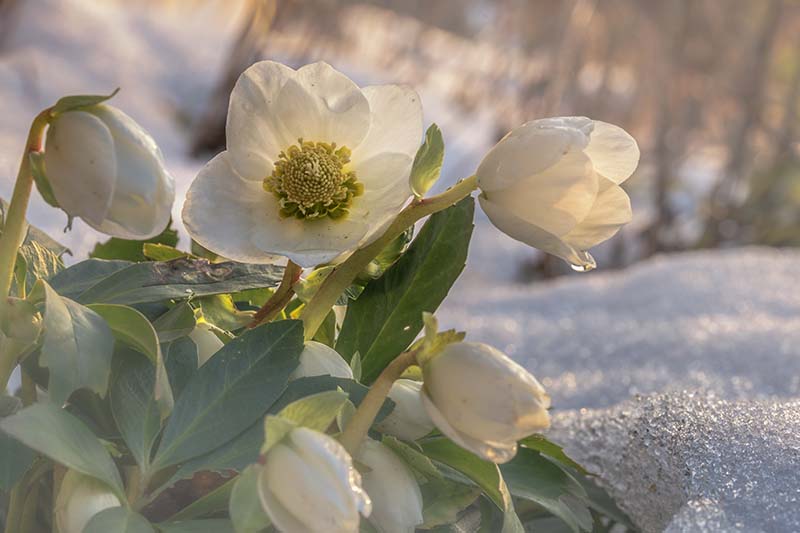
If you’ve got other suggestions or questions, drop us a line in the comments below. We’re always happy to hear from our readers!
And before you go, give these articles on growing hellebores a read:




